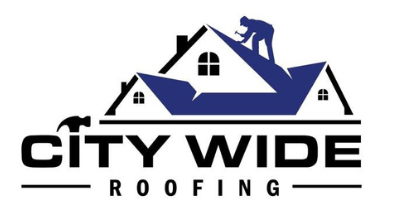A roof is like a shield that protects your home from the outside elements. It shields you and your loved ones from rain, snow, and harsh sunlight. However, a poorly installed roof can lead to many problems such as leaks, mold growth, and structural damage. Therefore, it is crucial to ensure that your roof installation is completed safely and up to code.
Building codes and regulations set standards for minimum safety requirements for construction projects. They are designed to protect homeowners from potential hazards while ensuring that buildings meet certain safety standards. As a homeowner, it is essential to understand these regulations to ensure that your roof installation meets the necessary requirements.
Hiring a skilled contractor who understands building codes and regulations can help you navigate the process of installing a new roof while ensuring compliance with local laws.
In this article, we will discuss how homeowners can ensure their roof installation is completed safely and up to code by understanding building codes and regulations, hiring an experienced contractor, and taking precautions for safety during installation.
Understanding Building Codes and Regulations
Familiarizing oneself with local building codes and regulations is imperative for homeowners to ensure that their roof installation adheres to safety standards and meets legal requirements. Building codes specify the minimum acceptable standards for construction work, including roofing projects. These codes help regulate the quality of materials used, the design of the structure, and the methods of installation.
Building codes can vary from one location to another. Homeowners should check with their local building department or consult a licensed contractor to understand what specific codes apply in their area. By doing so, they can ensure that any necessary permits are obtained before beginning construction and avoid costly fines or legal issues down the road.
Understanding these regulations also helps homeowners select reputable contractors who have experience working within these guidelines, ensuring that their roof installation is completed safely and correctly according to code.
Hiring a Skilled and Experienced Contractor
Contractors with a proven track record of experience and skill are essential to ensure that the installation of a roof is executed correctly. Here are some key reasons why:
– Expertise: A skilled contractor has years of experience in the roofing industry and understands the intricacies involved in installing a new roof. They have knowledge of various roofing materials, tools, and techniques required for a successful installation.
– Safety: Roofing is a dangerous job that requires workers to be at heights and work with heavy equipment. A skilled contractor will prioritize safety measures to protect themselves, their team, and homeowners from accidents or injuries during the installation process.
– Compliance: An experienced contractor is familiar with building codes and regulations related to roofing installations in your area. They will ensure that all necessary permits are obtained before starting work and that every aspect of the installation meets code requirements.
– Warranty: Hiring an experienced contractor ensures that you receive quality service backed by warranties on both material and labor. This can give you peace of mind knowing that any issues arising from poor craftsmanship or faulty materials will be resolved.
Selecting an experienced contractor ensures that your roofing project is completed safely, efficiently, compliantly, and comes with guarantees for quality workmanship.
Taking Precautions for Safety During Installation
Implementing safety precautions is crucial during the installation of a new roof to prevent accidents and injuries.
One important precaution is ensuring that all workers are properly trained in safety procedures and equipment usage. They should be equipped with personal protective gear such as hard hats, safety glasses, gloves, and harnesses if working at heights. Tools and equipment used during installation should also be chosen carefully for their safety features.
In addition, it’s important to ensure that the work area is safe before starting any work on the roof. This includes inspecting the site for potential hazards like power lines or unstable ground conditions. Workers should also avoid working on wet or icy surfaces as this can increase the risk of falls.
By following these basic precautions, homeowners can help ensure that their roofing project is completed safely and without incident.
Invest In Quality Roof Installation Services Today For Long-Term Peace Of Mind
Hiring The Right Contractor For Your Roof Installation Needs


